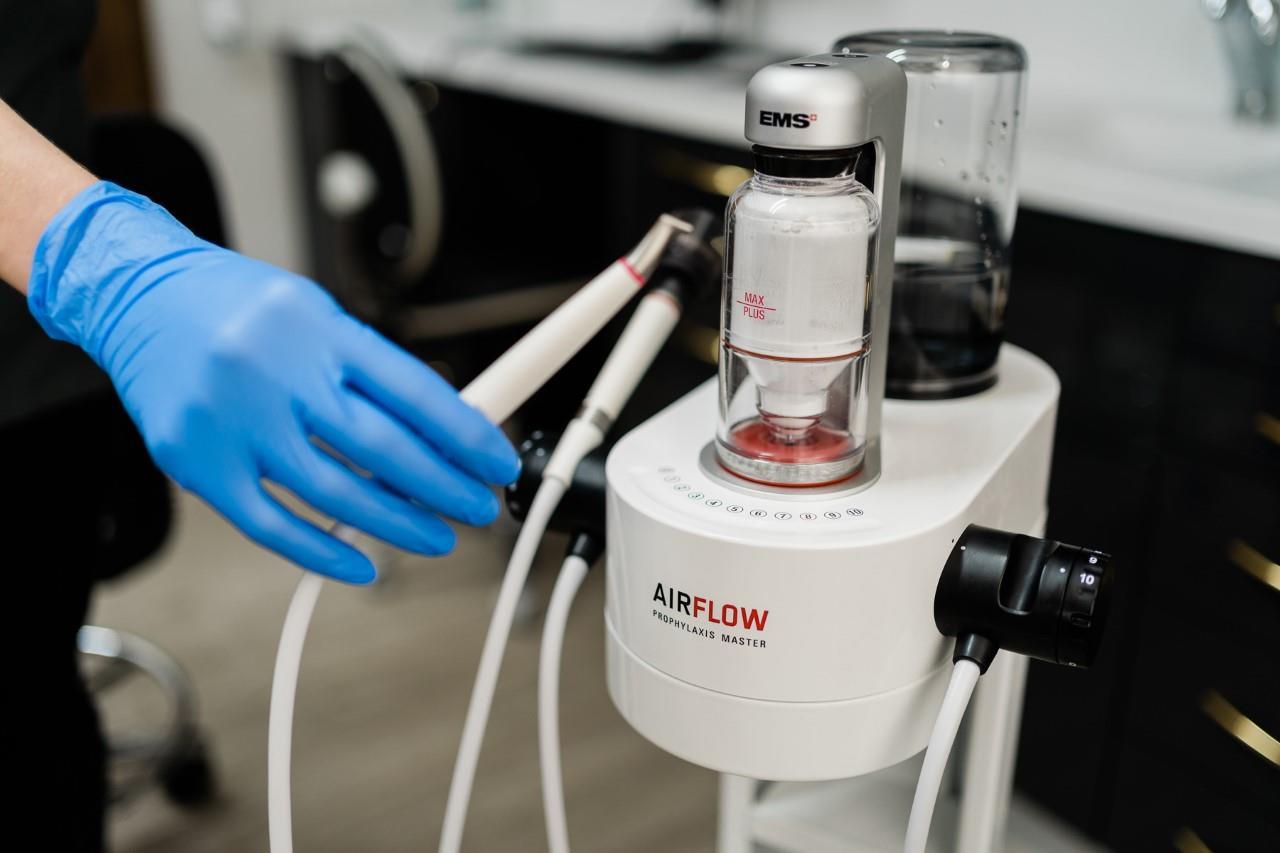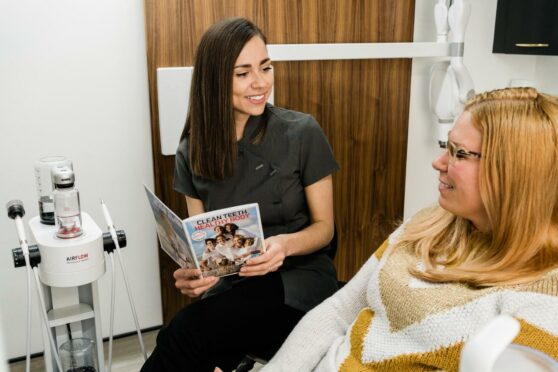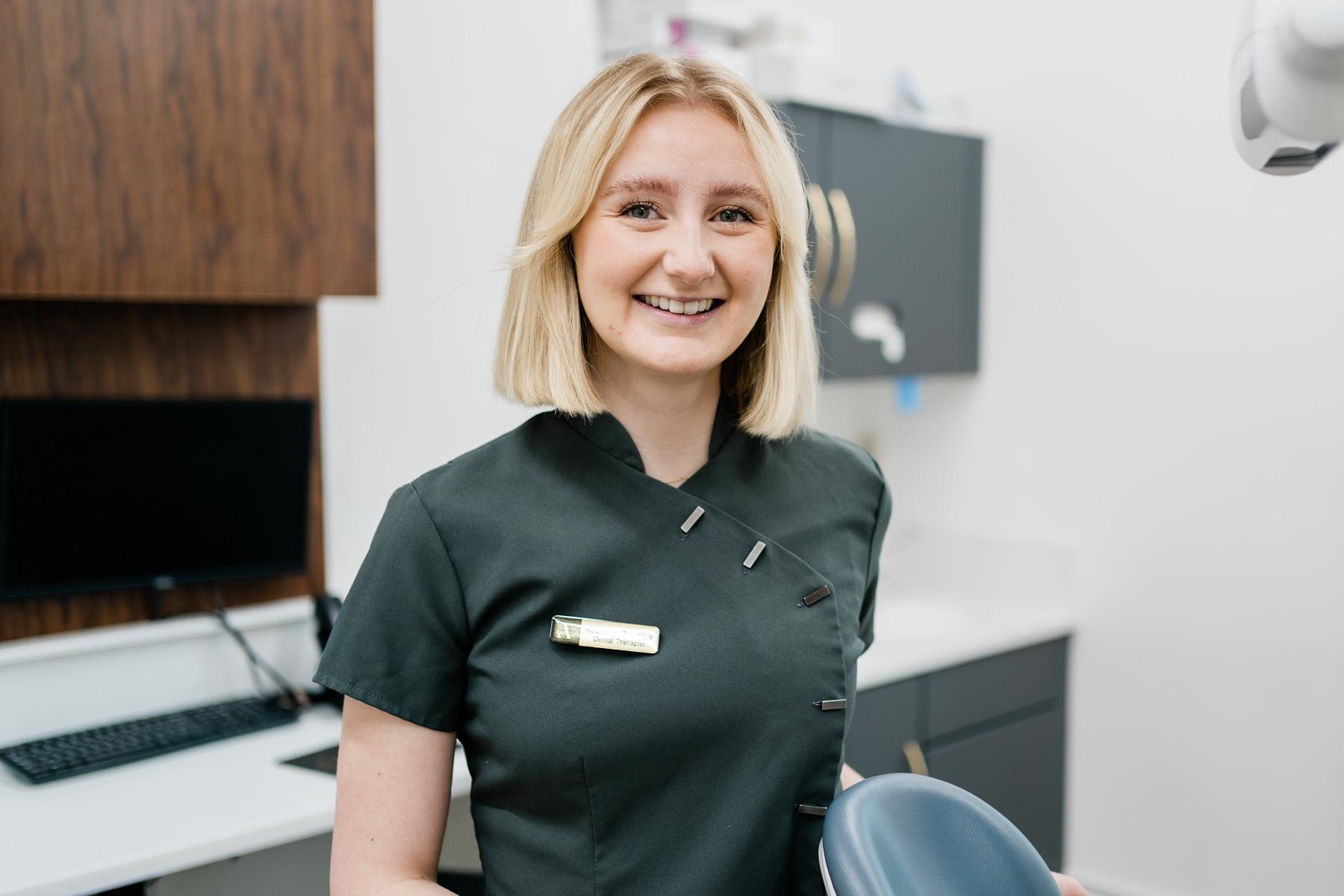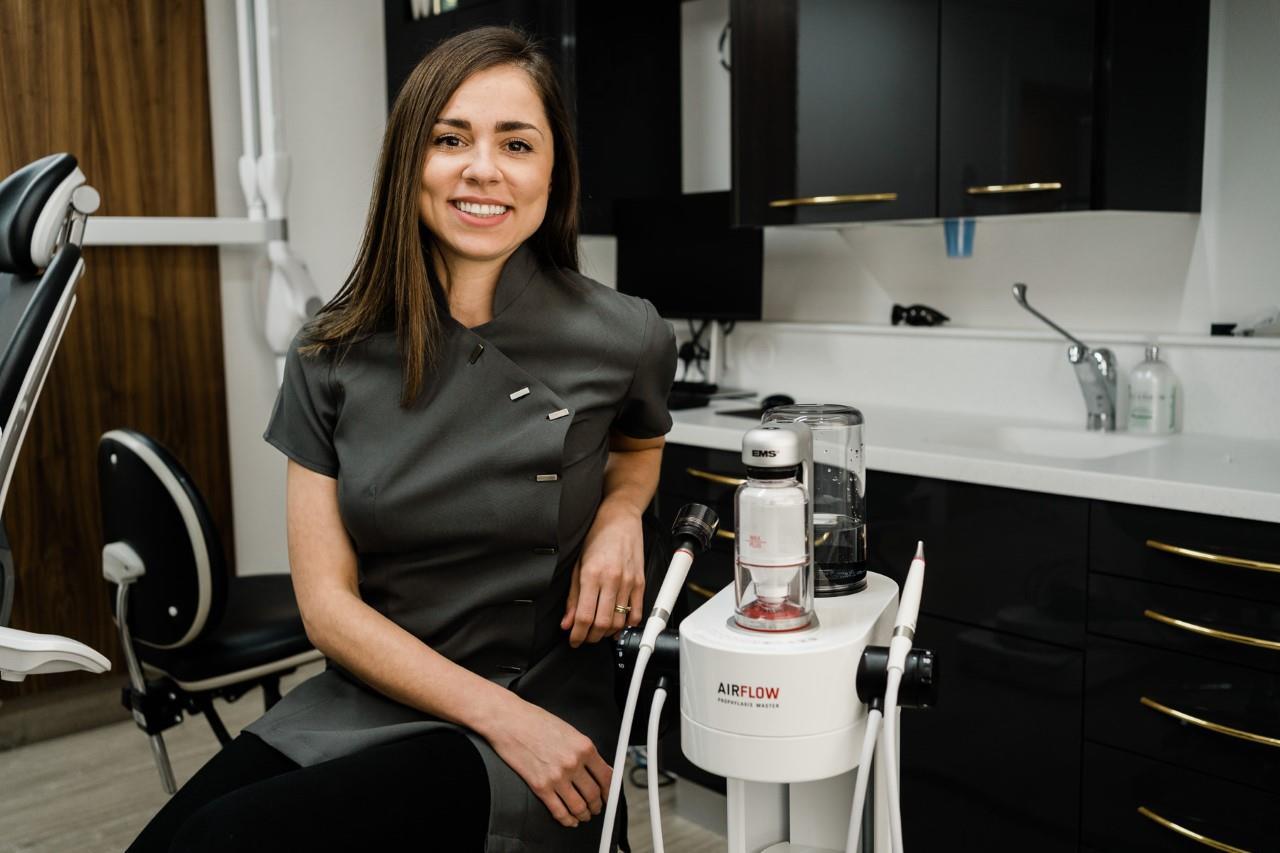Have you heard about a revolutionary dental system that instantly brightens teeth and is ideal for sensitive teeth? It’s set to transform dental hygiene in Aberdeen. Read on to discover more.
-
Some Press and Journal online content is funded by outside parties. The revenue from this helps to sustain our independent news gathering. You will always know if you are reading paid-for material as it will be clearly labelled as “Partnership” on the site and on social media channels.
This can take two different forms.
“Presented by”
This means the content has been paid for and produced by the named advertiser.
“In partnership with”
This means the content has been paid for and approved by the named advertiser but written and edited by our own commercial content team.
There’s nothing that quite compares to that ‘just cleaned’ feeling when you leave the dentist – and now even those with sensitive teeth can enjoy a squeaky clean smile.
How? It’s all thanks to its new state-of-the-art EMS Airflow device and Guided Biofilm Therapy.
It’s now available at Andrew Scott Dental, a leader in dental hygiene in Aberdeen. We spoke to two of the practice’s dental therapists to find out more; Alicja Chudziak, who is new to Andrew Scott Dental but has three years’ experience with the system, and Rebecca Clayphan, who has worked at the practice for two years as a dental therapist and is currently training to be a dentist.
What is the difference between a dental hygienist and a dental therapist?
Before we go into the revolutionary new treatment and how it works, it’s worth stopping for a second to explain what the difference is between a dental hygienist and a dental therapist.
Rebecca explains: “As well as oral hygiene treatment, as a dental therapist we are able to offer additional treatments. This includes treatment on children, fillings on adult teeth and services like the treatment of reversible and irreversible gum disease. We can take x-rays and diagnose diseases too. We are also able to treat patients by direct access which means that patients do not have to register with one of our dentists.”
Seeing a dental therapist is important. Rebecca says: “It reduces the risk of things like gum disease and decay, and therefore in the long run reduces your chances of needing fillings. Gum disease has been linked to a lot of medical conditions too, so investing in keeping your mouth healthy can help to keep the rest of your body healthy.”
You don’t need to see a dentist before booking into a dental therapist, but they will advise you if something needs further attention from a dentist.
The next level of dental hygiene in Aberdeen: a state-of-the-art way to clean your teeth
Now, the new EMS Airflow device and Guided Biofilm Therapy treatment is helping dental therapists keep their patients’ teeth cleaner than ever.
Alicja describes Guided Biofilm Therapy as “the most modern and patient-orientated professional teeth cleaning”. It involves eight steps. Here’s a video that explain what happens at each stage:
Rebecca says: “I’m really excited, as is the whole team, to bring it to the practice. It is the gold standard treatment using state-of-the-art tech, so to be able to offer that to current and any new patients is really rewarding. And knowing we are removing 100% of the biofilm, which is what causes dental decay and gum disease, and giving patients an instantly brighter smile – it’s exciting!”
What is the difference between Guided Biofilm Therapy and a traditional scale and polish?
Guided Biofilm Therapy allows your dental therapist much greater accuracy when it comes to cleaning teeth. Alicja explains: “Teeth feel really smooth afterwards, as there is no residue and grittiness from the polishing paste. With traditional scale and polish, it is not as common to disclose pre-treatment and that makes the treatment less thorough. But here, when you disclose you see everything and you can remove every part of the biofilm from the teeth.”
What are the benefits of Guided Biofilm Therapy?

As leaders when it comes to dental hygiene in Aberdeen, Andrew Scott Dental is pleased to introduce patients to the benefits of this new treatment. These includes:
- It’s great for sensitive teeth. Alicja says: “It’s pain-free thanks to heated water. The device heats the water up to 40 degrees. So anyone who has sensitivity to cold drinks, they can tolerate it very well. Often those patients don’t like going to the hygienist because they’re sensitive to cold water.” That means Guided Biofilm Therapy is great for nervous patients, with Rebecca agreeing that it’s a “gamechanger” for sensitive teeth.
- It’s minimally invasive and engaging for the patient. Alicja notes that after the treatment, which shows up where plaque is building, patients “feel very well educated about how to take care of their teeth at home.”
- It brightens teeth instantly. “It also give patients more confidence because all staining is removed. If you are a smoker or drink a lot of tea, coffee or red wine – it works very well for discolouration,” explains Alicja.
In fact, Guided Biofilm Therapy is suitable for adults and children, is safe in pregnancy and can be used with delicate dental cosmetic work, from implants to braces and crowns. It’s not suitable for patients with uncontrolled/severe asthma and patients that are allergic to chlorhexidine and erythritol.
How often should you clean your teeth?
Getting your teeth professionally cleaned
So how often do you need to see a dental therapist and undergo Guided Biofilm Therapy? Generally speaking, if you have healthy teeth and gums you should see your dental therapist or hygienist every six months.
However, it varies from patient to patient, with more complex cases requiring more frequent visits. If you already have signs of gum disease, the new therapy at Andrew Scott Dental can actively treat the disease. Then once stable, you will be moved onto a maintenance plan.
Cleaning your teeth at home
What’s also important is looking after your teeth yourself. Alicja says: “What we do is 20% of the success and what the patient does at home is 80%. I can educate my patients on how to improve oral health, but they need to do their part at home too.”
Rebecca adds: “We work together to reduce the risk of diseases and a lot of the treatment actually happens in your bathroom at home. That’s taking the advice we give you and putting that into practise.”
It starts with brushing your teeth. How often should you clean your teeth? Rebecca explains: “The gold standard advice is to brush your teeth twice a day with an electric toothbrush, once in the evening definitely and then another time. Use a fluoride toothpaste, spit the toothpaste out and don’t rinse with anything after, whether that be water or mouthwash. The reason for that is you’re just rinsing away your toothpaste, so you’re not getting the benefit from the fluoride.
“It’s also important to use something in between your teeth, such as floss or interdental brushes, once a day. This is something we can discuss with you to find the best product for you!”
Enjoy squeaky-clean teeth and a fresh, healthy smile! Find out more about Guided Biofilm Therapy and book to visit a dental therapist at Andrew Scott Dental, the leaders in dental hygiene in Aberdeen.


